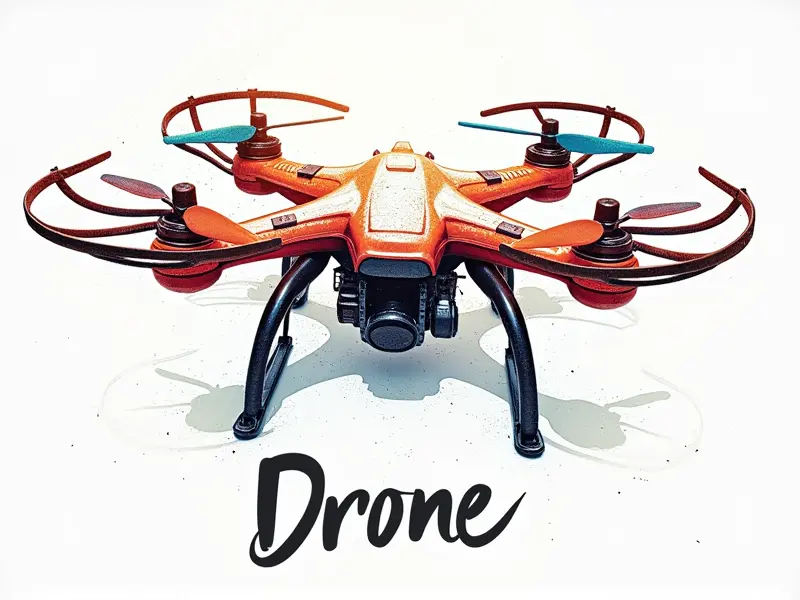How to stabilize an FPV drone?

Top Tips for Stabilizing Your FPV Drone
Stabilizing your FPV (First Person View) drone is crucial for achieving smooth and controlled flights. Whether you're a beginner or an experienced pilot, there are several techniques and adjustments that can significantly enhance the stability of your quadcopter.
Mastering FPV Drone Stability Techniques
To master the art of stabilizing your FPV drone, it's essential to understand the basics. Proper setup and calibration of your flight controller, along with fine-tuning PID settings, are fundamental steps in achieving stable flights.
- Flight Controller Setup: Ensure that your flight controller is properly installed and calibrated for optimal performance.
- PID Tuning: Adjust the Proportional (P), Integral (I), and Derivative (D) settings to balance responsiveness and stability.
Quick Fixes for Unstable FPV Drones
If your drone is experiencing sudden movements or instability, there are several quick fixes you can try:
- Battery Check: Ensure that the battery voltage is within acceptable limits and not causing performance issues.
- Motor Balancing: Uneven motor speeds can lead to instability. Use a balancing tool or software to ensure all motors are running at consistent RPMs.
Essential Guide to Stable FPV Flying
A stable FPV drone is the key to enjoying smooth and enjoyable flights. Here’s how you can achieve this:
- Frame Design: Opt for a well-balanced frame design that distributes weight evenly.
- Propeller Selection: Choose high-quality propellers designed specifically for FPV racing to ensure optimal performance and stability.
Secrets to Perfectly Balanced FPV Drones
A perfectly balanced drone is the holy grail of FPV flying. Here are some secrets to achieving this:
- Weighing Components: Use a precise scale to weigh each component and ensure symmetry.
- Battery Placement: Position your battery in such a way that it balances the center of gravity (CG).
Easy Tricks to Stabilize FPV Racing Quads
FPV racing quads require precision and stability. Here are some easy tricks to stabilize them:
- Frame Adjustment: Fine-tune the frame’s geometry for better aerodynamics.
- Motor Mounting: Ensure that motor mounts are securely attached and aligned properly.
Achieving Smooth Flight with FPV Drones
To achieve smooth flight, focus on these key areas:
- Firmware Updates: Keep your drone’s firmware up to date for the latest stability improvements.
- Flight Mode Selection: Choose appropriate flight modes that enhance stability during different phases of flight.
Tips for Enhancing FPV Drone Stability
Enhancing stability involves a combination of hardware and software adjustments. Here are some tips to consider:
- Servo Calibration: Calibrate servos regularly to maintain optimal performance.
- ESC (Electronic Speed Controller) Settings: Tune ESC settings for better motor control and stability.
Easy Ways to Improve FPV Drone Control
Improving control is essential for stable flights. Here are some easy ways to achieve this:
- Receiver Quality: Use high-quality receivers with strong signal strength and low latency.
- Transmitter Settings: Adjust transmitter settings for optimal range and responsiveness.
How to Keep Your FPV Drone Steady
Maintaining steady flight requires consistent monitoring and adjustments. Here’s how you can keep your drone steady:
- Regular Maintenance: Perform regular maintenance checks on all components.
- Weather Conditions: Be mindful of weather conditions that may affect stability, such as wind or temperature changes.
Secrets to Enhancing FPV Drone Stability
To truly enhance the stability of your FPV drone, consider these advanced techniques:
- Damping Systems: Implement damping systems like dampeners or shock absorbers for added stability.
- Sensor Calibration: Regularly calibrate sensors to ensure accurate readings and responsive control.
Conclusion
Stabilizing your FPV drone is a continuous process that involves understanding the nuances of flight dynamics, hardware adjustments, and software tuning. By following these tips and tricks, you can significantly enhance the stability of your quadcopter, leading to smoother flights and more enjoyable experiences.

